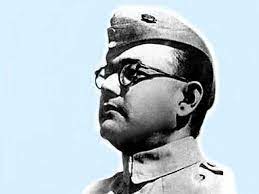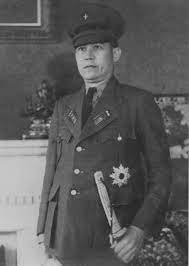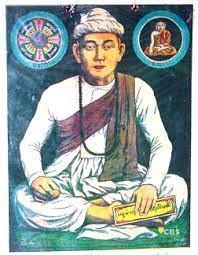Hitler and Burma

The German dictator Adolf Hitler (1889-1945) is one of the most despicable persons in history. He and his Nazi dictatorship have left a scar in the history of the human race. The war he started claimed more than 60 million lives, among them 26 million Russians and about 7 million Germans. In Myanmar, however, you often see motorcyclists wearing a plastic helmet, which on the one hand is reminiscent of the German steel helmet of World War II and on the other hand is ‘decorated’ with Nazi symbols: the Nazi swastika, the imperial eagle holding the swastika in its claws , sometimes ‘SS’ runes. This often comes as a shock to visitors – and not only those from Germany. In this case there is no longer an excuse by saying that the swastika is ‘the wrong way around’ – the matter is clear! The name of the popular Burmese rock band IRON CROSS also gives food for thought … But let’s get back to the helmets: they are apparently made in China, not in Myanmar. But what’s behind all this? Well, first of all, for better or for worse, one has to acknowledge that Hitler is not viewed as negatively in Myanmar (actually, almost everywhere in Asia) as in the West – just think of the Arab world. When a Burmese friend once spoke admiringly of Hitler to me I asked him what he thought of Hitler, who is called ‘Hit-te-la’ in Myanmar: “I think he loved his country very much !” – whatever that means.
As a rule of thumb, ordinary Burmese know two Germans: Hitler and the current German soccer star (e.g. ‘Hit-te-la and App Kristen’ = Ulf Kirsten). The latter are constantly changing, but Hitler remains. A real phenomenon! The recognition that Hitler enjoyed in Asia at the peak of his power is manifested e.g. in the fact that both Subhas Chandra Bose (netaji, see below) and Ba Maw (adipati), the first president of independent Burma by Japanese grace, assumed the title of ‘leader’. The man undoubtedly made a lasting impression, because as recently as the 1990s an easily excitable German hotel manager was surreptitiously dubbed ‘Little Hitler’ by his employees.
It is hardly surprising that towards the end of the colonial period Germany, the ‘enemy of our enemy’ (i.e. Great Britain), was widely regarded as a friend by the colonised peoples of the world. Regardless of whether there was ideological agreement or not. In the case of Hitler, we can safely assume that he generally regarded the inhabitants of the Asian continent as racially inferior. As Subhas Chandra Bose (1897-1945), who was twice the leader of the Indian Congress Party, was quite annoyed to learn. Unlike Gandhi and Nehru, the ‘Netaji’ believed that India could only achieve its independence through military means, not by non-violence. Accordingly, he had a fondness for soldierly ceremonies and uniforms. Hitler refused to recognize the Indians as an ‘Aryan brother race’, as desired by Bose. Instead, the Nuremberg Laws of 1935 (‘Law for the Protection of German Blood and German Honour’) compared them with ‘colored people’, Jews and ‘Negroes’. Bose therefore rejected the Nazi regime’s racial doctrine as ‘unscientific’. He stayed in Germany several times (the last time from 1941 to 1943) and was married to a German woman with whom he had a daughter. She is still highly revered in India today. During a tour in Burma, among my guests was an elderly man, then a high school student, whose school in Berlin Bose had visited at the time, where he gave a speech about the blood ties of the Aryan peoples. The customer still remembered that the Wehrmacht (German army) provided a field kitchen (Gulaschkanone) for that event.


After WWII had begun, he was placed under house arrest in Calcutta, from which he was able to escape in 1941. He ended up in the Soviet Union via Afghanistan, where he tried in vain to persuade Stalin to support his idea of attacking the British Empire in India. The Soviet leader sent him on to Germany – shortly before Hitler’s Wehrmacht invaded the Soviet Union. This put Bose in a trap: returning to India by land had become impossible. While Hitler apparently did not think much of Bose, he may have viewed him as a ‘useful idiot’ who could serve him well in the fight against England. Bose was planning to build an Indian National Army (INA). This was to be recruited from Indian soldiers in British service who had been taken prisoner of war, as well as from the many Indians living in Southeast Asia. At the side of the Japanese, he wanted to liberate his homeland from the British colonial yoke. The story of his voyage from Germany to Southeast Asia is particularly dramatic! It’s available for those interested who speak German. Quite apart from such general considerations about Hitler and other ‘leaders’, there is a
special national component in Myanmar: The Setkya Min! The word is a Burmese corruption of the Pali term cakkavatti (universal ruler) and is best translated as ‘swastika prince’ (the swastika is an ancient sun sign). According to legend, he was believed to be the future Buddha Maitreya (Pali: Metteya) and a reincarnation of King Alaungsithu, one of the most powerful rulers of the Bagan dynasty. Toward the end of the current era and at a time of moral decline, he would appear in Myanmar. Then not only should the whole world be governed according to the laws of Buddhist teachings, but there should also be wealth in the country. He is most probably modelled after ‘The Prince of Naunggyan’, who was a son of King Bagyidaw (ruled 1819-1837, under his rule the first Anglo-Burmese War was fought) and Queen Mae Nu. Before their marriage she was, as some say, an ‘ordinary fishwife’. Moreover there were rumours that she had an intimate relationship with the king’s abbot, for whom she had a large monastery, the Maha Aungmye Bonzan, built in Innwa (Ava). It was destroyed in the 1839 earthquake but rebuilt in 1873. Others described her as a simple country girl.

Anyway, it is said that that prince was involved in a palace rebellion and, along with many other suspects, was sentenced to death by King Tharawaddy. Since royal blood was not to be shed, he was sewn into a velvet sack weighted with stones, thrown into a lake and left to the miserable death of drowning. Just as he was in free fall, the legendary magician (Burmese: wei’ za) and superman Bo Bo Aung came hurtling through the air, grabbed the sack and flew away with the prince. Statues of him (usually depicted as a man dressed all in white with a turban and a cane in hand) can be found on numerous pagodas across the country. The legend of the swastika prince held that he would be the king who would one day possess war machines purchased from the gods. Astrologers’ predictions and signs and omens seen in him identified him as a ‘great ruler to come’. We are dealing here with a figure with messianic traits. And now, in a time of deepest national humiliation by the English colonial masters, when peasant uprisings like that of Hsaya San were cruelly suppressed and their leaders were hanged like criminals, an Aryan, a member of the Setkya race, grabbed power in Germany in the sign of the swastika. And he even started a war against the British – that couldn’t be a coincidence! Especially since he was also a vegetarian, didn’t drink alcohol and lived abstinently as a bachelor. And so it was that many Burmese revered Hitler as the swastika prince – or still do..